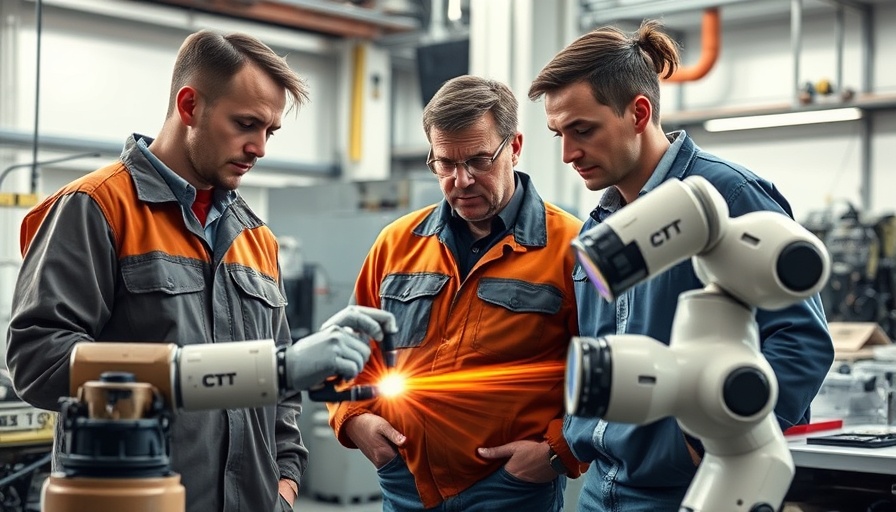
Revolutionizing Metal Fabrication: The Rise of Cobot Laser Welding
As industries evolve, adaptive growth in production methodologies is critical, particularly in custom metal fabrication. Great Lakes Stainless, a Michigan-based metal fabricator, exemplifies this shift by dramatically reducing cycle times and improving quality with the integration of cobot (collaborative robot) laser welding technology. By adopting the FANUC CRX-25iA cobot coupled with IPG's LightWELD system, they have set new standards in both efficiency and craftsmanship.
From Manual Labor to Automated Precision
The challenge faced by Great Lakes Stainless was formidable. They needed to produce complex curved stainless-steel components for escalator platforms with a high degree of accuracy and speed. Previously, traditional welding methods—MIG and TIG workflows—required around three hours of manual labor per part. This inefficiency, paired with rising customer demands, led to a decision to turn towards automation. By incorporating a cobot, the cycle time plummeted to just 15 minutes per unit—a staggering 95% reduction.
The Benefits of Cobot Integration
The automated laser welding solution from Great Lakes not only expedited production but also enhanced the quality of the welds produced. As Michael DeBruyn, President of Great Lakes Stainless states, "Combining the FANUC cobot with the laser welder delivers much better weld results." The precision of the cobot allows for continuous and consistent weld paths, significantly reducing the issue of warpage that plagued their manual processes. This not only improved the final aesthetic of their products but also minimized the need for additional rework, thus preserving valuable resources.
Enhancing Workforce Efficiency
One of the most profound impacts of deploying cobot technology in welding environments is the shift in workforce utilization. Remarkably, the cobot's operational efficiency frees skilled fabricators to focus on more complex tasks, rather than repetitive, time-consuming ones. This transition not only conserves manpower but fosters a more innovative working environment where human skills are applied to high-level challenges. This aspect aligns with the ongoing industry trend of reassessing labor dynamics amidst emerging automation technologies.
Future Implications: A Marketplace Shift Towards Automation
The success of Great Lakes Stainless in utilizing cobot laser welding serves as a powerful case study, reinforcing the necessity for adaptation within the fabrication sector. As demand for efficiency and sustainability rises, companies are encouraged to explore automation solutions that enhance productivity. This shift not only meets the immediate goals of production but also positions organizations as forward-thinking leaders in their fields, ready to tackle future challenges with innovative solutions.
Embracing Innovation in Metal Fabrication
Great Lakes' pioneering approach can be a model for other metal fabricators facing similar hurdles. There exists an ever-increasing potential for automation to alleviate labor shortages, improve quality assurance, and expand operational capacities. Moreover, the environmental benefits derived from reduced material waste and improved processes should not be overlooked, as companies strive for sustainability amidst growing ecological concerns.
In conclusion, the metal fabrication industry stands on the brink of transformation, proving that through innovation—like the integration of cobot technologies—companies can achieve unparalleled efficiency and quality. Embracing such advancements is essential not only to meet market demands but also to secure a competitive edge in a rapidly changing landscape.
As we collectively push towards a more automated and sustainable future, the success stories from Great Lakes Stainless serve as a beacon for others looking to navigate this evolving environment. It’s time to consider how your organization can leverage technology to enhance its capabilities!
 Add Row
Add Row  Add
Add 




Write A Comment